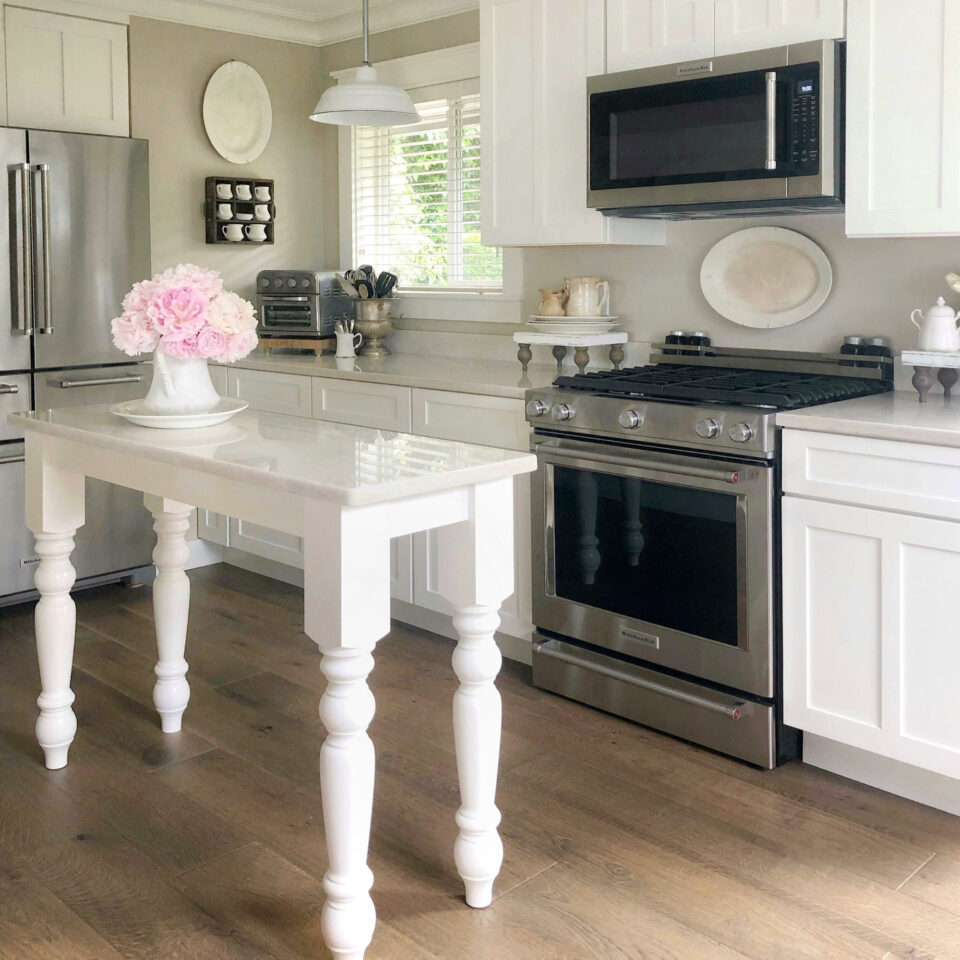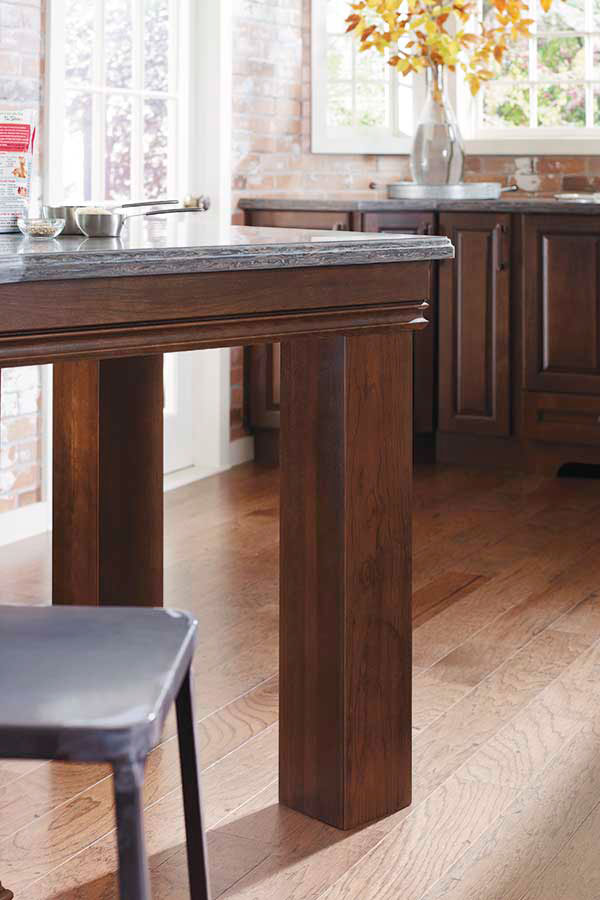Elegant Kitchen Island Legs: Elevate Your Kitchen Design
Important Tips for Choosing the Perfect Eating Table for Your Cooking Area
Picking the best dining table for your kitchen area is more than just an issue of taste; it necessitates a complete understanding of your area and requirements. Begin by measuring your available area to make sure adequate clearance for movement. The form of the table plays a crucial function; while rectangular tables suit bigger locations, round ones foster affection, and extendable choices provide versatility. Material choice is just as vital, with hardwoods providing resilience and glass financing a modern touch. The table needs to balance with your kitchen's appearances and accommodate your family members easily. What other variables might influence this vital decision?
Step Your Area
Picking the ideal dining table begins with a thorough assessment of your available space. This foundational step makes certain that the table not only fits comfortably within the room but also complements the total layout and functionality of your dining location.
Consider the circulation of activity around the table. It is vital to leave ample room for chairs to be taken out and for people to walk around the table without obstruction. A basic guideline is to allow at the very least 36 inches of clearance from the side of the table to the local wall surface or furniture. This guarantees ease of access and convenience throughout meals.
In addition, think of the variety of people you typically captivate and whether you require additional room for guests. Going with an extendable table can supply flexibility, permitting you to fit varying varieties of restaurants. By precisely gauging your area, you prepared for picking a table that enhances both the aesthetic appeals and capability of your dining area.
Pick the Right Shape

On the other hand, round tables are superb for smaller cooking areas or intimate gatherings, as they promote discussion by allowing everybody to encounter each other. They likewise give a sense of comfort and can fit well in tighter rooms due to their lack of sharp edges. Oblong tables provide the finest of both globes, combining the length of rectangle-shaped tables with the intimacy of round ones, making them functional for numerous settings.
Square tables are an additional alternative, particularly suited for square-shaped spaces. They produce a balanced and modern-day appearance, cultivating an equivalent eating experience for all seated.
Product Considerations
When selecting a dining table, product factors to consider are vital in figuring out the table's toughness, upkeep requirements, and total visual. Timber is a traditional choice, offering timeless appeal and robustness.
Glass-topped tables supply a modern-day, streamlined appearance and can make an area show up larger due to their openness. They require regular cleaning to stop smudges and finger prints. Additionally, toughened up glass is recommended for its extra stamina and safety.

Lastly, composite products like MDF (Medium-Density Fiberboard) or plywood are budget-friendly choices. These products can simulate the appearance of solid timber however may not offer the very same long life. They are typically easier to tidy yet can be prone to water damage otherwise appropriately sealed.
Inevitably, the option of product must align with your cooking area's style, your lifestyle requires, and your budget restraints. (kitchen island legs)
Seating Ability and Comfort
Just how do you figure out the right seats capacity and convenience for your eating table? This vital step includes assessing both the physical area available in your kitchen area and your household's practical demands. Begin by determining your kitchen location to ensure the table fits easily, allowing at the very least 36 inches of clearance around it for very easy movement. Think about the variety of individuals that usually eat together, as this will certainly influence the table dimension. For a family of four, a rectangle-shaped table of 48 inches long or a round table with a 48-inch diameter is generally adequate.
The elevation of the table should ideally be around 30 inches, providing a balanced ergonomic stance for seated diners. Chairs must have a seat elevation of 18 to 20 inches to make sure a comfy eating posture.
Style and Appearance
Selecting a dining table that fits your design and aesthetic appeal entails stabilizing individual preference with the existing decoration of your eating room. The eating table is usually the centerpiece of the kitchen, and its layout needs to enhance the total motif of the area. Whether your cooking area flaunts a modern-day, minimal look or a rustic, farmhouse charm, the table you choose need to balance with these aspects to create a natural and welcoming atmosphere.
Consider products meticulously; wood provides a timeless appeal and can vary from rich mahogany for a conventional aim to lighter oak for a modern feel. Steel and glass tables, on the various other hand, can introduce a sleek, commercial edge to your kitchen. Do not forget the table's form-- rectangle-shaped tables are timeless and versatile, while round and oblong choices can foster a more intimate dining experience.
Furthermore, useful reference pay attention to finishes and details. A distressed surface could include character and warmth, whereas a glossy surface you could try this out area can contribute to a tidy, modern visual. Eventually, your table ought to not just in shape perfectly right into your cooking area's design yet also show your personal design, boosting the area both functionally and visually.
Verdict
Finally, picking the excellent dining table for a kitchen area demands careful evaluation of room, form, product, seating capability, and aesthetic consistency. Guaranteeing a minimum clearance of 36 inches facilitates comfy movement, while the choice of shape boosts spatial characteristics. Material selection effects toughness and design, making it crucial to line up with the cooking area's general aesthetic. Inevitably, a well-chosen eating table promotes an inviting atmosphere and suits the house pleasantly, thus improving the dining experience.

When selecting a dining table, product factors to consider are critical in establishing the table's toughness, upkeep needs, and general visual. For a family of four, a rectangle-shaped link table of 48 inches long or a round table with a 48-inch size is usually adequate.
Do not ignore the table's form-- rectangular tables are functional and timeless, while round and oval options can promote a much more intimate eating experience. kitchen island legs.